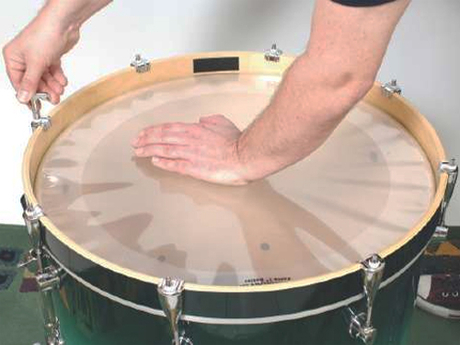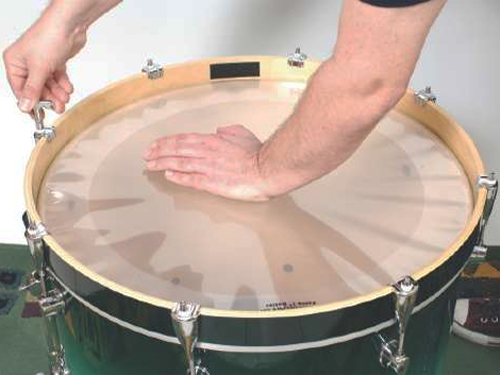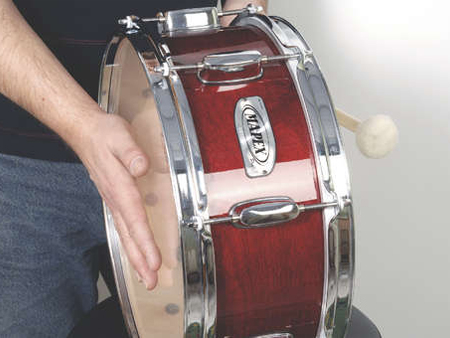10 quick drum tuning tips
How to tune your kit like a pro


Candle wax - the secret to tuning your kit like a pro? Read on to find out what the hell we're on about or, for an in-depth look, check out our tom, bass and snare drum tuning guides, all courtesy of Rhythm Magazine.
10 drum tuning tips
1. Use candle wax
Take the old head off. Wipe the dust and debris off the bearing edge. Wax the edge with a little candle wax for a tight seal.
2. Tension evenly
Ensure a new head is tensioned evenly, otherwise it will be pulled unequally, get distorted and you wont get a clean sound.
3. Use your fingers
Take up all the slack by turning the tension rod to 'finger tight' - when the head of the tuning rod makes contact with the metal rim.
4. One rod = one turn
Now increase tension by systematically applying a single turn to each rod, criss-crossing diagonally around the drum.
5. Use your fist!
Press down on the centre with your fist to make sure the head is properly stretched and 'seated'.
Next: crack, slack and fine tune

6. And wait for the 'crack'…
Continue until the head is board tight. The cracking sound is just the glue settling, and it's important to hear this.
Get the MusicRadar Newsletter
Want all the hottest music and gear news, reviews, deals, features and more, direct to your inbox? Sign up here.
7. Slack evenly
Now you can slacken the head back off - again take care to do this evenly
8. Fine tun
At last you're ready for fine tuning. Take the head back up, evenly all around - criss-crossing diagonally again.
9. One rod = one turn (again)
Make sure that each rod gets the same number of full, half or quarter turns.
10. Fine, fine tune
Tap lightly an inch so in from each tension rod. Make fine adjustments until the pitch is the same all around the head.
For the best monthly drumming tips, video lessons and reviews, check out Rhythm Magazine.
“I’m sorry I ruined your song!”: Mike Portnoy hears Taylor Swift's Shake It Off for the first time and plays along... with surprising results
“Nile's riff on Get Lucky is a classic example of a funk riff, where the second of each 16th-note duplet is slightly delayed”: Locking down the theory of groove









